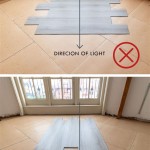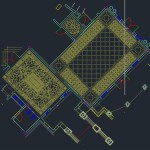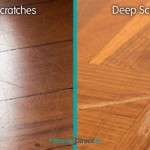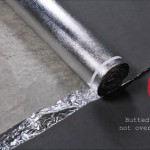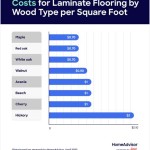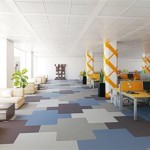Outdoor Interlocking Sports Flooring Tile: A Comprehensive Overview
Outdoor interlocking sports flooring tile represents a versatile and increasingly popular solution for creating durable and safe playing surfaces across a diverse range of athletic activities. These tiles, manufactured from various materials like polypropylene, recycled rubber, and specialized polymers, provide a modular system that simplifies installation and offers numerous advantages over traditional poured-in-place surfaces or natural turf. This article will delve into the material composition, installation process, performance characteristics, and applications of outdoor interlocking sports flooring tile.
Material Composition and Manufacturing
The selection of materials plays a pivotal role in determining the performance, longevity, and environmental impact of outdoor interlocking sports flooring tile. Each material possesses unique properties that cater to specific application requirements. Common materials include:
Polypropylene (PP): Polypropylene is a thermoplastic polymer renowned for its high tensile strength, chemical resistance, and affordability. PP tiles are typically lightweight, easy to handle, and resistant to staining and fading from UV exposure. They are often employed in basketball courts, tennis courts, and other multi-purpose sports areas where durability and ease of maintenance are prioritized.
Recycled Rubber: Recycled rubber tiles are primarily manufactured from crumb rubber derived from recycled tires. This material offers excellent shock absorption, slip resistance, and acoustic dampening properties. Recycled rubber tiles are particularly well-suited for playgrounds, fitness centers, and areas requiring impact attenuation. They also contribute to environmental sustainability by diverting waste tires from landfills.
Specialized Polymers: Some manufacturers utilize proprietary polymer blends that combine the desirable characteristics of multiple materials. These specialized polymers can be engineered to provide enhanced UV resistance, flexibility, and impact absorption. Such tiles are often found in high-performance sports applications where demanding conditions necessitate superior material properties.
The manufacturing process typically involves molding or extrusion techniques. Polypropylene tiles are generally injection-molded, creating precise interlocking mechanisms and consistent dimensions. Recycled rubber tiles are often compression-molded, bonding the crumb rubber particles together with a binder. Regardless of the material, quality control measures are essential to ensure dimensional accuracy, consistent color, and structural integrity.
Installation Procedures and Considerations
One of the primary advantages of outdoor interlocking sports flooring tile is its relatively straightforward installation process. The modular nature of the tiles allows for quick and easy assembly without the need for specialized tools or extensive site preparation. However, proper installation is crucial to ensure the long-term performance and stability of the flooring system.
Site Preparation: The first step involves preparing the sub-base. A level and compacted surface are imperative for preventing unevenness and potential tile separation. Common sub-base materials include compacted gravel, asphalt, or concrete. The specific requirements will depend on the intended use of the area and the load-bearing capacity of the underlying soil.
Tile Placement: The tiles are interconnected using a system of interlocking tabs or loops. The installer aligns the tiles and firmly presses them together until the interlocking mechanism engages. A rubber mallet may be used to ensure a secure connection. It is important to follow the manufacturer's instructions regarding the direction of tile placement and any specific locking procedures.
Perimeter Treatment: After the main area is covered, edge pieces or transition strips are often installed to provide a smooth and safe transition between the tiled surface and the surrounding environment. These perimeter treatments can be made from the same material as the tiles or from complementary materials like rubber or plastic. They also help to prevent tripping hazards and protect the edges of the tiles from damage.
Drainage Considerations: Effective drainage is crucial for outdoor applications. Interlocking tiles are typically designed with drainage channels or perforations to allow water to flow through the surface and prevent ponding. Proper grading of the sub-base is also important to ensure that water drains away from the playing surface. In areas with high rainfall, a permeable sub-base may be necessary to facilitate efficient water removal.
Expansion and Contraction: Like all materials, outdoor interlocking sports flooring tiles expand and contract with temperature fluctuations. Adequate expansion joints should be incorporated into the design to accommodate these movements and prevent buckling or cracking. The size and spacing of expansion joints will depend on the material type, the size of the area, and the expected temperature range.
Performance Characteristics and Applications
The performance characteristics of outdoor interlocking sports flooring tile vary depending on the material composition and the specific design of the tiles. However, some common benefits include:
Shock Absorption: The resilient nature of many tile materials provides excellent shock absorption, reducing the risk of injuries from falls and impacts. This is particularly important in playgrounds and fitness areas where children and athletes are at risk of falling.
Slip Resistance: The textured surface of interlocking tiles offers enhanced slip resistance, even when wet. This helps to prevent slips and falls, improving safety for users of all ages and abilities. The slip resistance is typically measured using a coefficient of friction (COF) test, with higher COF values indicating greater slip resistance.
Durability: Outdoor interlocking sports flooring tiles are designed to withstand the rigors of outdoor use, including exposure to UV radiation, extreme temperatures, and heavy foot traffic. The tiles are typically resistant to cracking, fading, and staining, ensuring a long service life with minimal maintenance.
Ease of Maintenance: Interlocking tiles are easy to clean and maintain. Regular sweeping or hosing down is typically sufficient to remove dirt and debris. Stubborn stains can be removed with mild detergents or pressure washing. The modular nature of the tiles also allows for easy replacement of damaged sections without having to replace the entire surface.
Versatile Applications: Outdoor interlocking sports flooring tiles are used in a wide range of applications, including:
Basketball Courts: PP tiles are a popular choice for basketball courts due to their durability, ball bounce, and ease of maintenance. The tiles can be customized with team logos and color schemes to create a professional-looking playing surface.
Tennis Courts: Interlocking tiles provide a consistent and comfortable playing surface for tennis players. The tiles offer good grip and shock absorption, reducing the risk of injuries. The tiles can also be color-coded to delineate court lines and playing zones.
Playgrounds: Recycled rubber tiles are commonly used in playgrounds to provide a safe and cushioned surface for children to play on. The tiles help to reduce the severity of injuries from falls and create a more inviting play environment.
Fitness Centers: Interlocking tiles are used in outdoor fitness centers to provide a durable and slip-resistant surface for exercise equipment and activities. The tiles can withstand heavy foot traffic and protect the underlying surface from damage.
Multi-Purpose Courts: Interlocking tiles are an ideal solution for multi-purpose sports courts, allowing for a variety of activities to be played on the same surface. The tiles can be easily reconfigured to accommodate different sports and events.
Patios and Decks: Interlocking tiles can also be used to create attractive and functional patios and decks. The tiles provide a comfortable and slip-resistant surface for outdoor living spaces. They are also easy to install and maintain, making them a popular choice for homeowners.
In summary, outdoor interlocking sports flooring offers a compelling alternative to traditional surfacing options due to its ease of installation, durability, safety features, and aesthetic versatility. The continued development of new materials and manufacturing techniques will likely further expand the applications and benefits of this type of flooring in the future.

Outdoor Sports Tiles Discount Gym Basketball Court

Interlocking Court Flooring Rubber Perfect Surfaces

Multi Purpose Sport Floor Pp Interlocking Tile Outdoor Basketball Court Flooring China Pvc Sports And Made In Com

Outdoor Interlocking Sports Floor 100 Quality Sport Tiles

Portable Multi Purpose Outdoor Sport Interlocking Floor Tiles For Basketball And Badminton China Pvc Sports Flooring Made In Com

Outdoor Modular Sports Flooring Tiles 15 20 Mm At Rs 100 Square Feet In Delhi

How Do Interlocking Outdoor Tiles Work Sprung Gym Flooring

Basketball Outdoor Floor Interlocking Tiles Court China Manufacturer

Outdoor Pp Interlocking Flooring Tiles At Rs 95 Square Feet In Delhi Id 16509555533

Elastic Sport Floor Outdoor Interlocking Easy Assemble Basketball Court Football Flooring Tiles China Sports And Playground Made In Com
Related Posts

